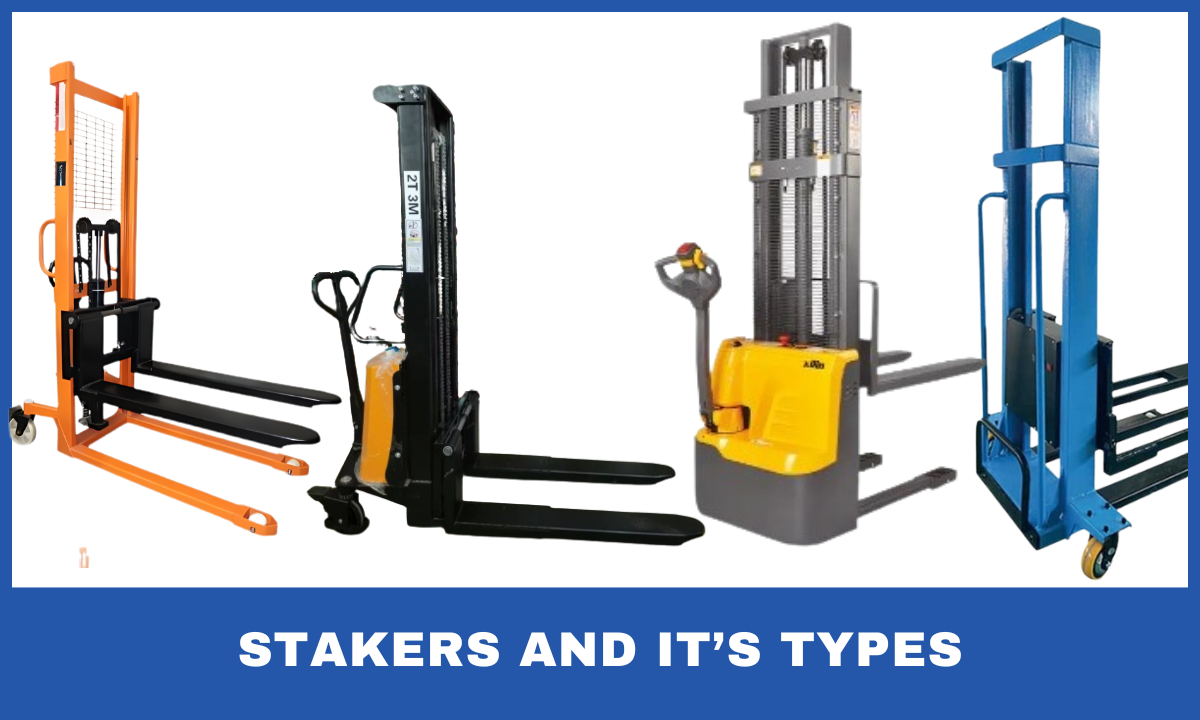
Stackers are essential tools in material handling, especially in warehouses and industrial settings. They're super- efficient at moving and organizing large amounts of stuff, which really boosts productivity and keeps things safe. In this blog, we're gonna dive into what stackers are all about, the different types you can find, how they work, and the wide range of ways they can be used.
What exactly is a Stacker?
So, a stacker is basically an industrial truck that's used to lift and move heavy loads, like pallets. The cool thing about stackers is that they're often more compact and versatile compared to traditional forklifts. This makes them perfect for squeezing into narrower aisles and smaller spaces. They're designed to make stacking, storing, and retrieving goods a breeze, cutting down on manual labor and making everything way more efficient.
The Different Types of Stackers
You'll find stackers in all sorts of shapes and sizes, each one tailored to specific tasks and environments. Here are some of the most common types:
1. Manual Stackers:
- These ones are powered by humans.
- They're great for lighter to moderate loads.
- Perfect for small warehouses and shops.
2. Semi-Electric Stackers:
- These stackers are a mix of manual and electric power.
- The lifting mechanism is electric, but you still have to push them around.
- They're super handy for medium workloads.
3. Electric Stackers:
- These stackers are fully electric and run on electricity.
- They're built for heavy-duty lifting and transporting.
- Ideal for big warehouses where they'll be used all the time.
How Stackers Actually Work?
OK, let's break down how stackers do their thing. There are a few key components and mechanisms involved:
1. Mast:
- This is the vertical structure that holds up the lifting platform.
- It guides the platform as it goes up and down.
2. Forks:
- These are the arms that grab onto pallets or loads.
- They lift and transport the materials.
3. Hydraulic System:
- This is what powers the lifting mechanism.
- In electric and semi-electric stackers, there's an electric motor that drives the hydraulic pump.
4. Control System:
- For manual stackers, you've got handles to move them around.
- Electric stackers have electronic controls to handle all the lifting and lowering operations.
5. Wheels:
- These give the stacker its mobility.
- And a lot of times, they come with brakes for extra stability and safety.
Where Can You Use Stackers?
Stackers are super versatile and efficient, which is why they're used in all sorts of industries. Here are some common applications:
- Warehousing: Stackers are essential for keeping goods organized and stored. They make it easy to quickly find and manage inventory.
- Manufacturing: In manufacturing plants, stackers are used to move raw materials, components, and finished products between different stages of the production process.
- Retail: Retail stores use stackers to stock shelves and manage inventory, ensuring products are easily accessible to customers.
- Distribution Centers: Stackers streamline the process of loading and unloading goods, improving the efficiency of distribution operations.
- Logistics: In logistics and supply chain operations, stackers facilitate the smooth movement of goods, reducing handling times and improving overall productivity.
